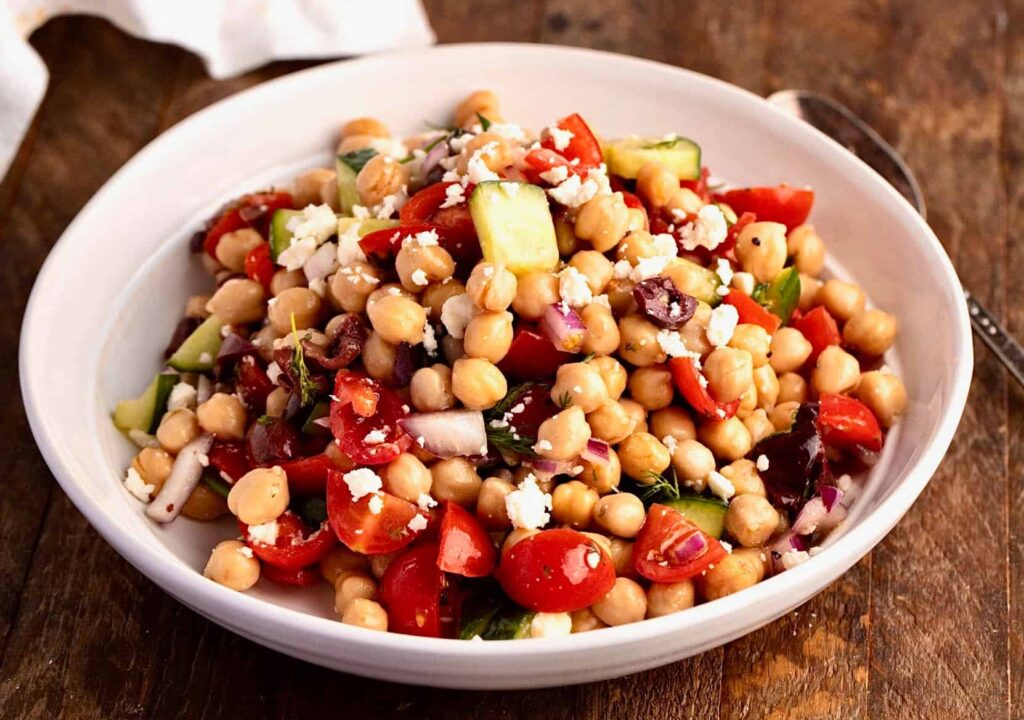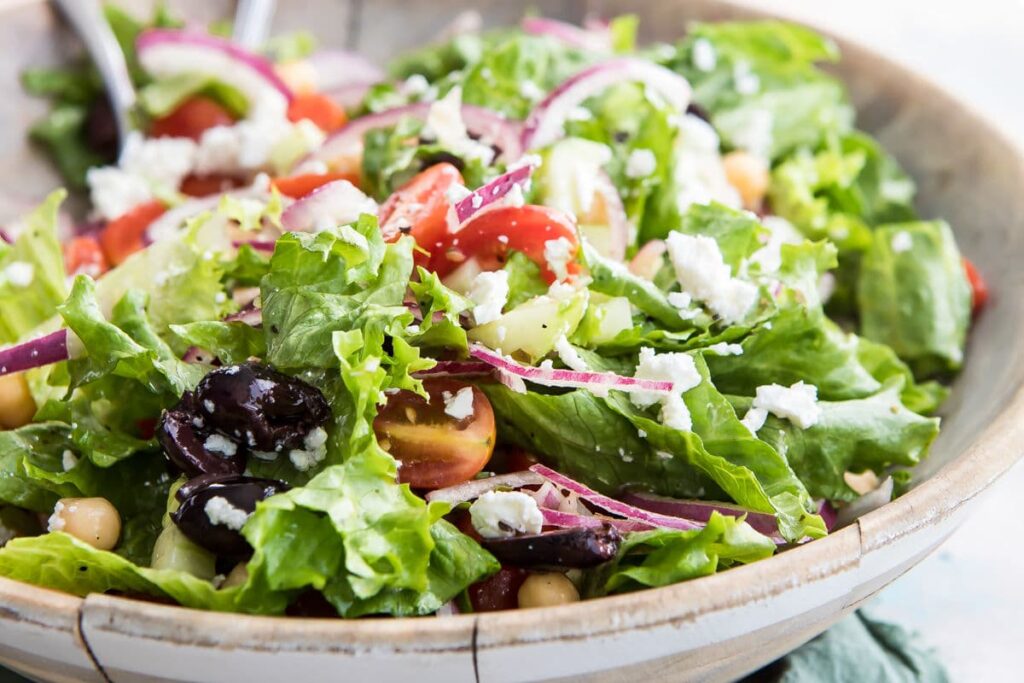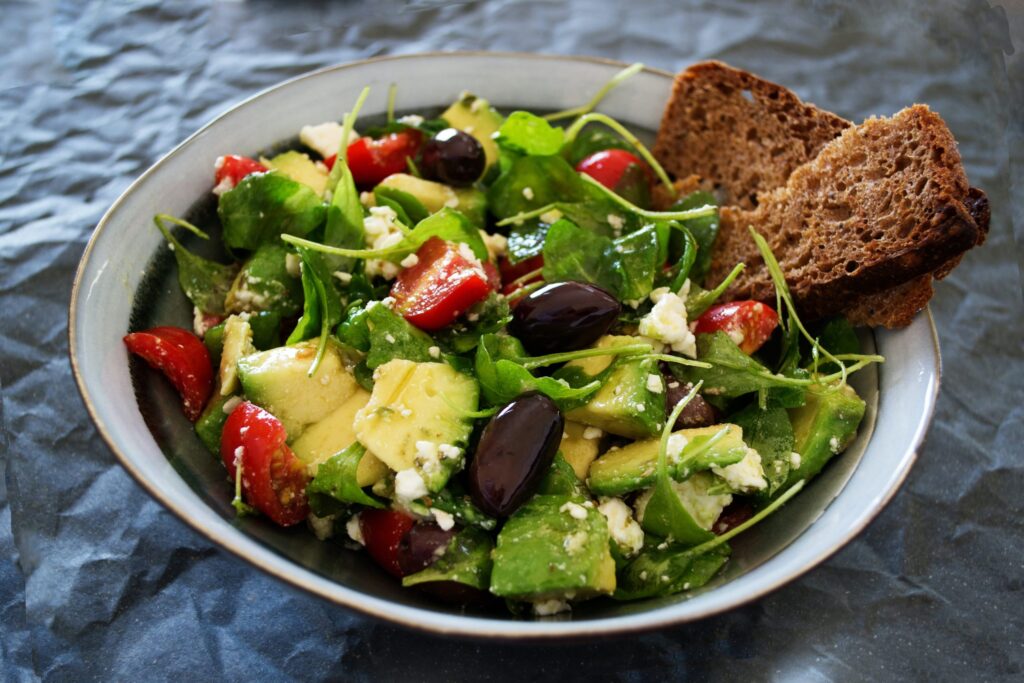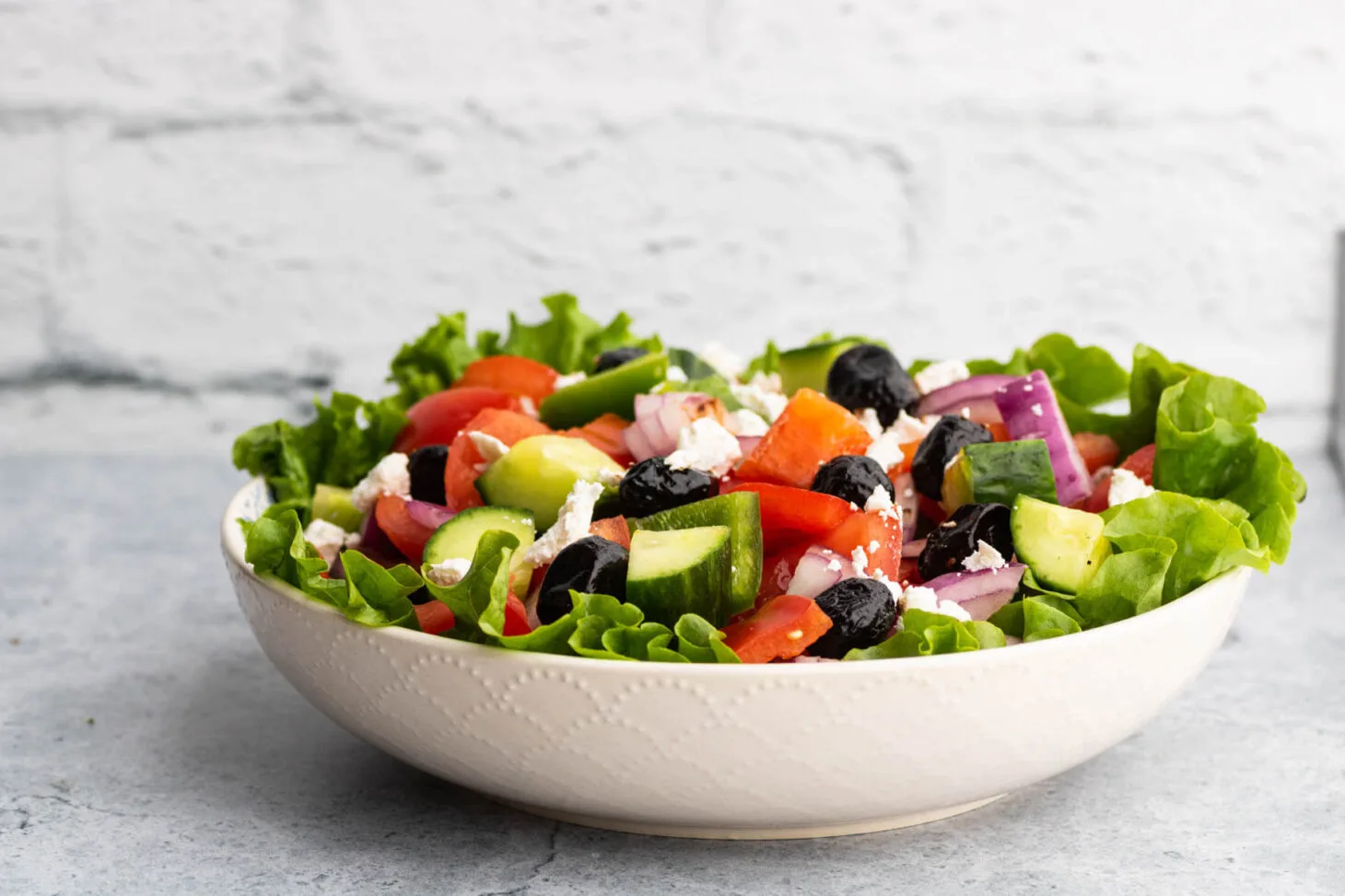Who doesn’t love a refreshing Greek salad on a hot summer day? Bursting with flavors and colors, Mediterranean cuisine offers a delightful array of Greek salad variations that tantalize the taste buds and nourish the body.
In this article, we’ll take a journey through the world of Mediterranean delight, exploring the diverse variations of the classic Greek salad.
From traditional recipes to modern twists, there’s a Greek salad for every palate and occasion.

Unveiling the Classic Greek Salad:
Let’s start with the cornerstone of Mediterranean cuisine – the classic Greek salad.
Known for its simplicity and freshness, this salad features a harmonious blend of crisp cucumbers, juicy tomatoes, tangy feta cheese, briny olives, and zesty red onions, all drizzled with extra virgin olive oil and sprinkled with oregano.
It’s a celebration of flavors that captures the essence of Greek culinary tradition in every bite.
Adding a Twist with Protein:
For those craving a heartier meal, adding protein to your Greek salad is a game-changer.
Grilled chicken, shrimp, or tofu can elevate the salad from a side dish to a satisfying main course.
The addition of protein not only increases the satiety factor but also provides a nutritional boost, making it perfect for fueling your body after a workout or a long day.
Exploring Vegetarian Variations:
Vegetarians rejoice – there are plenty of Greek salad variations that cater to your dietary preferences.
Swap out the traditional feta cheese for creamy avocado or marinated tofu for a plant-based twist on the classic recipe.
You can also experiment with different types of greens, such as kale or arugula, to add depth and texture to your salad.
The possibilities are endless when it comes to creating a vegetarian Greek salad that’s both delicious and nutritious.

Incorporating Mediterranean Flare:
One of the joys of Mediterranean cuisine is its vibrant flavors and aromatic spices.
To infuse your Greek salad with a touch of Mediterranean flare, consider adding ingredients like roasted red peppers, artichoke hearts, or sun-dried tomatoes.
These additions not only enhance the flavor profile but also add a pop of color and texture to your salad, transforming it into a culinary masterpiece.
Lightening Up with Whole Grains:
For a wholesome twist on the classic Greek salad, why not add some whole grains?
Quinoa, farro, or bulgur can be tossed into the salad for an extra dose of fiber and protein, making it a satisfying and balanced meal.
The nutty flavor and chewy texture of whole grains complement the fresh ingredients beautifully, creating a Greek salad that’s both hearty and healthy.
Conclusion:
Mediterranean delight knows no bounds when it comes to Greek salad variations.
Whether you prefer the classic recipe or like to experiment with modern twists, there’s a Greek salad out there to suit every taste and dietary preference.
So why not embark on a culinary adventure and explore the diverse flavors of Mediterranean cuisine?

FAQs:
Can I make Greek salad ahead of time?
Absolutely! Greek salad actually tastes better when the flavors have had time to meld together. You can prepare it a few hours in advance and store it in the fridge until ready to serve.
Are Greek salads keto-friendly?
While traditional Greek salad ingredients like vegetables and olive oil are keto-friendly, be mindful of the carb content in ingredients like tomatoes and onions. You can adjust the recipe to suit your keto diet by reducing these high-carb ingredients.
Can I use other types of cheese in Greek salad?
Feta cheese is the classic choice for Greek salad, but you can certainly experiment with other types of cheese such as goat cheese or halloumi for a unique twist.
How can I customize Greek salad to my taste preferences?
Feel free to get creative and customize your Greek salad with your favorite ingredients! Whether you like it spicy with jalapenos or crunchy with radishes, the beauty of Greek salad lies in its versatility.
Is Greek salad suitable for vegans?
Absolutely! You can easily make Greek salad vegan-friendly by omitting the feta cheese or using a plant-based alternative. Just be sure to check the label to ensure it’s free from animal products.
